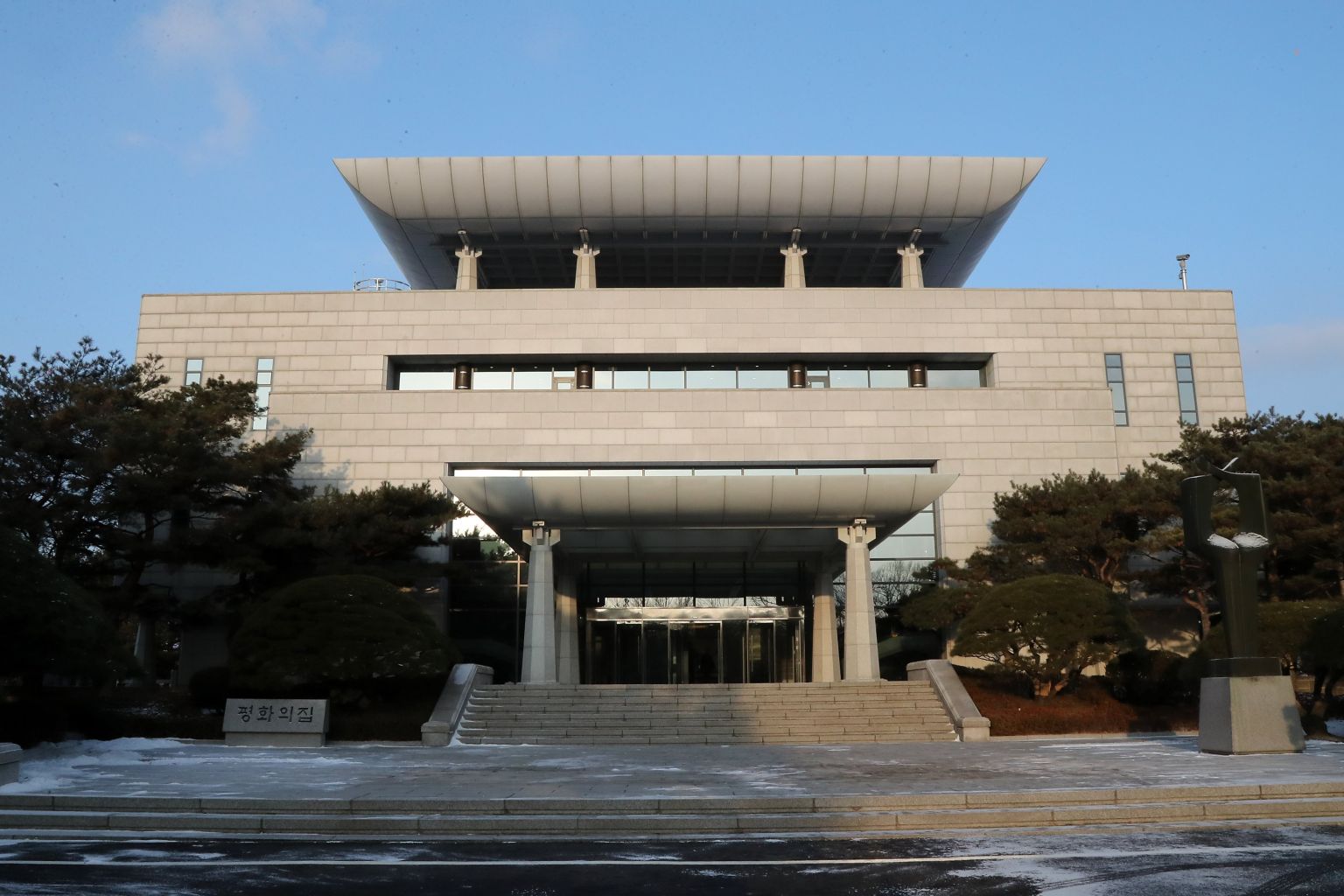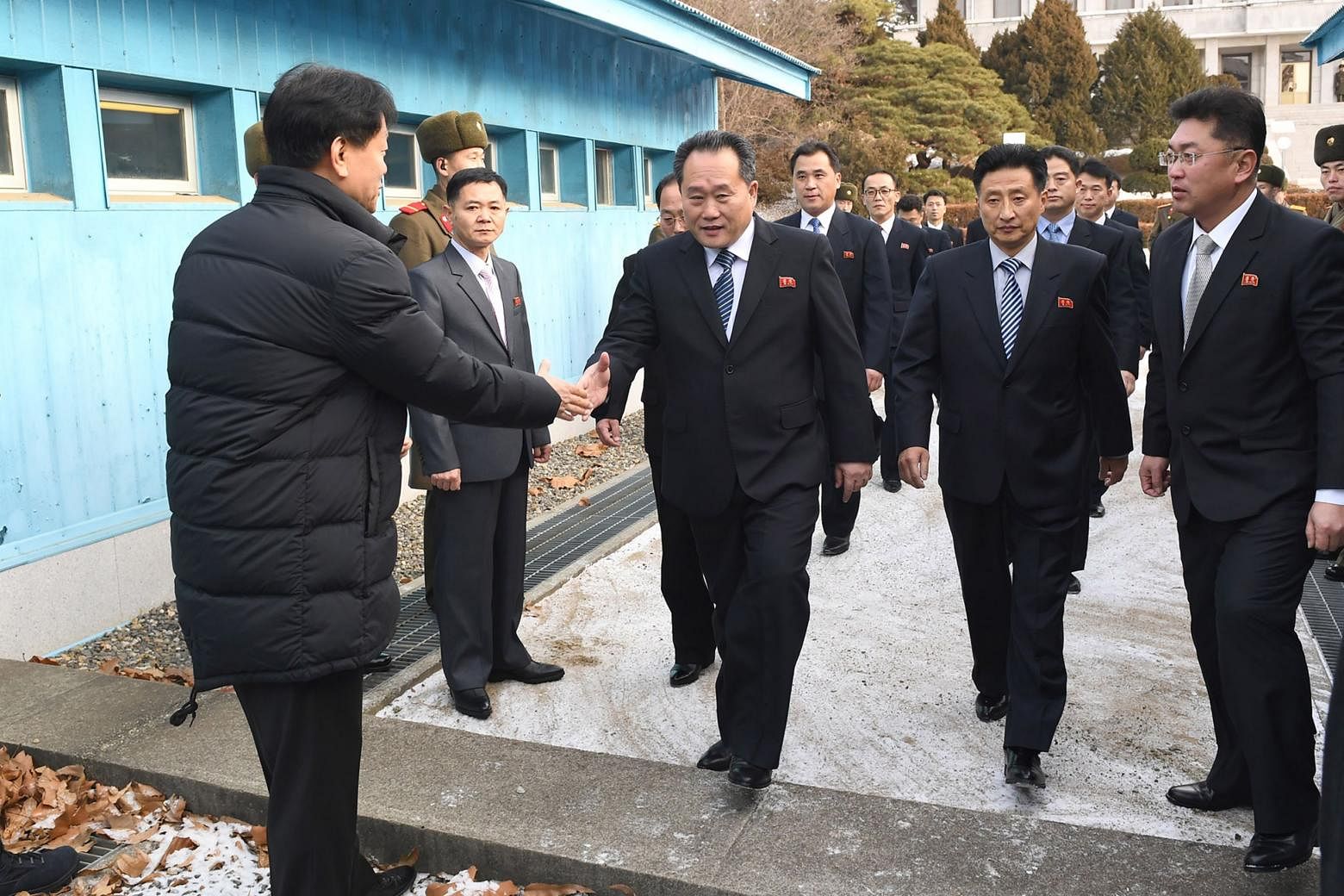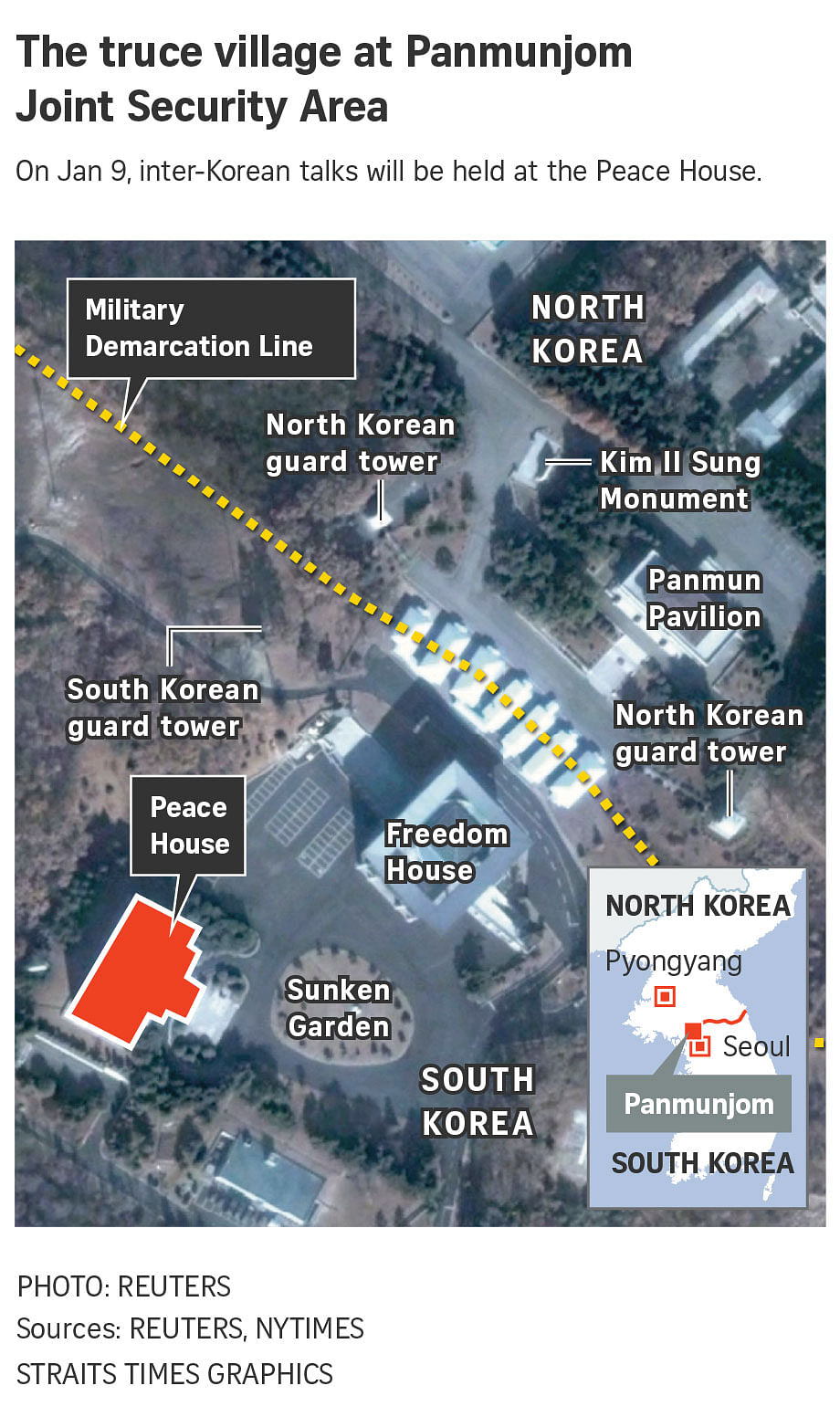7 things to know about Panmunjom, the truce village where time stands still
Sign up now: Get insights on Asia's fast-moving developments

The Peace House at the border village of Panmunjom in North Korea. The village, which lies in the Demilitarized Zone between the two Koreas, was designated as the one place where officials from both sides could meet.
PHOTO: EPA-EFE
Follow topic:
SEOUL - The world's spotlight has been cast on Panmunjom, a small village located in the the demilitarised zone separating the two Koreas.
On Tuesday (Jan 9), delegates from both Koreas once again gathered at the site for their first face-to-face talks since late 2015.
After the Korean war ended in a truce in 1953, Panmunjom was designated as the one place where officials from both sides could meet. It is also the world's last Cold War frontier where soldiers from both sides come face to face.
Tuesday's inter-Korean talks are closely watched by the rest of the world amid rising fears over North Korea's development of nuclear weapons and defiance of United Nations Security Council resolutions.
Here are seven things to know about Panmunjom, also known as the Joint Security Area.
1. No-man's land
Neither North nor South Korea have jurisdiction over Panmunjom.
It sits inside the heavily mined four-km-wide Demilitarized Zone (DMZ) that serves as the de facto border between the two Koreas, and the main road to the zone is lined with barbed-wire fences and security watchtowers.
Panmunjom is 50 km north of Seoul and 10 km east from the city of Gaeseong, a city which now belongs to North Korea.
The United Nations Command administers the site.
The Korean Armistice Agreement signed at Panmunjom left the Korean peninsula divided and the two Koreas technically still at war in the absence of a formal peace treaty to end the 1950- 1953 Korean War.
During Chuseok North Korean defectors or those with ancestors from the North would make trips to the DMZ to perform Thanksgiving prayers.
2. A venue for inter-Korean talks
After the Korean war ended in a truce in 1953, Panmunjom was designated as the one place where officials from both sides could meet.
The buildings in the truce village are connected to Seoul and Pyongyang so the discussions can be closely monitored by officials in the two capitals.
Cameras and microphones are reportedly placed in the conference room ahead of Tuesday's (Jan 9) talks to ensure that officials from both sides can monitor the talks as they happen.
South Korean President Moon Jae In and North Korean leader Kim Jong Un will be able to listen in on the discussions, and intervene if needed, according to a South Korean government official, who asked not to be identified.
3. Like the Korean peninsula, it's divided into two
The "truce village" is divided into two parts by a military demarcation line: one side belonging to the North, the other to the South.
In the middle of the village sit the UN Command buildings, crossing the middle of the line.
The North's delegation on Tuesday (Jan 9) walked over the Military Demarcation Line at Panmunjom at around 9.30 am (South Korean time) to make its way to the Peace House sited on the South Korean side of the truce village, reported South Korean media.
The North also has a talks venue on its side, Tongilgak.
The dividing line is marked only by a low cement slab that no soldiers, and visiting tourists, dare cross.


4. A hot spot for defections - and violence
Panmunjom has witnessed a number of dramatic incidents. Most recently, a North Korean soldier dashed across the border in an extremely rare and dramatic defection in November, when his comrades fired at least 40 rounds in an effort to kill him. He survived and is now recovering in the South.
There have been previous defections at Panmunjom, most notably in 1984 when a Russian student from Moscow sprinted across the border and triggered a 30-minute gun battle that left four people dead - although he was unhurt.
Another gun battle was recorded in 1967 when a senior journalist from the North's state-run Korean Central News Agency defected while covering military talks.
And there were fears of a full-scale conflict in 1976, after a group of North Korean troops axed to death two American soldiers who were trimming a nearby tree.
That episode changed the way soldiers move about this zone. Before the attack, they could cross over the demarcation line, but since the ax attack, each opposing forces must remain on its own side.
5. A place for leaders to make a point
American presidents visiting South Korea have often gone to DMZ as a symbolic demonstration of Washington's commitment to defend Seoul.
But bad weather forced Donald Trump to call off a surprise trip there in November - after his office earlier labelled such visits a "cliche".
North Korean leader Kim Jong Un made a rare trip to Panmunjom in 2012, with state media carrying pictures of him looking across the border at the South through a pair of binoculars amid heightened tensions.
6. A popular tourist destination
Over the years, the site has turned into a major attraction for visiting foreigners.
Tourists to the southern side are given ample warning against actions that could antagonise the North Korean soldiers before they cautiously begin capturing snapshots of the division.
Its official website listed the following as prohibited clothing: Torn denim pants, uniforms, T-shirts, short pants, mini-skirts, and other revealing clothing. The tour costs around 65,000 won to 85,000 won per person.
"It's very upsetting that a country is so divided," said Julia Ahn, a 24-year-old student from New York, on a trip to Panmunjom.
"It's good information but very hard to swallow."
The North also brings tourists to the site. The North Korean tour is reportedly conducted in a more relaxed manner than those conducted by the South.
Tourists from the North can regularly be seen shuffling around in sloppy vacation wear, taking jokey selfies with North Korean soldiers.
7. No, it is not the filming location for movie J.S.A
Panmunjom has inspired one of the highest-grossing movies in South Korea's history - J.S.A.
Released around the time of the first North-South presidential summit between North Korean leader Kim Jong Il and South Korean president Kim Dae Jung in 2000, the thriller involved a mysterious shooting in the Joint Security Area starred Lee Young Ae, Lee Byung Hun and Song Kang Ho.
Based on the novel DMZ by Park Sang Yeo, it was directed by Park Chan Wook.
Refused permission to shoot in the actual JSA, the director instead oversaw the construction of Korea's biggest and most expensive film set (US$800,000, 26,000 sq m) at that time.
SOURCES: AFP, NYTIMES, THE GUARDIAN

